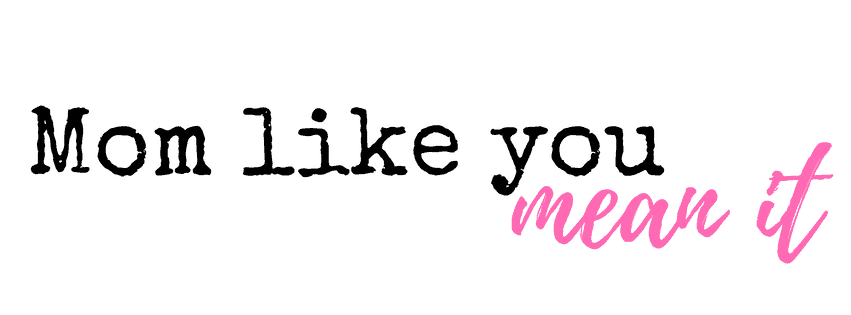
If you’re desperate for some sleep, trying a dream feed out may help your baby sleep longer.
My baby was not unlike many other babies, in that she enjoyed waking up around 2:30 am every single morning. As a new mom, I happily fed her each morning, but as the bags under my eyes grew bigger and bigger, one day someone mentioned the idea of a dream feed to me to solve the middle of the night wakings.
So if you’re a new parent desperate to get more than a few hours of sleep before your baby wakes in search of food, see if a late night feed is right for you and your baby.
What is a dream feed?
Designed to help new parents get longer stretches of sleep, a dream feed is simply feeding your baby right before you go to sleep.
The best time to dream feed your baby is between 10-12 at night and the idea here is that you’re essentially filling up your baby’s tummy so that they will sleep longer and hopefully miss that 2:30 or 3 am feeding.
Know that it’s pretty typical for a baby that’s been given a late feed to wake up in the 4 or 5 o’clock hour. This is not an indication that a dream feed is not working.
Most parents love the idea of sleeping from 11 p.m. to 4 a.m. or 5 a.m. Over time, you’ll find that your baby will drop the 4 a.m. feeding and sleep through until about 6:30 a.m.
What’s the ideal age to start the dream feed?
When your baby is first born and they’re still eating every 2-3 hours, this is not the time to start a dream feed in hopes that they’ll sleep a little longer at night.
While you can start this process around 8 weeks, most parents find they have more success starting a dream feed around three months, though, as baby is more ready to sleep for longer stretches of time at that point in their development.
How do I do a dream feed?
Experts are divided in exactly how to go about dream feeding, so I’ll offer the two different schools of thought and let you decide through trial and error with your baby, which is right for one.
On one side of the spectrum, it’s advisable to quietly pick up your baby, without waking her up, and feed her while she’s still asleep. You’ll offer this feed between 10-12 at night, right before you go to sleep.
Babies are able to feed while they’re asleep thanks to the innate instinct to suckle if they’re placed by a nipple. If baby is not suckling right away, you can try the rooting reflex, by simply stroking baby’s cheek nearest your nipple.
In the opposite camp, some experts say you should wake your baby and then offer the dream feed.
Related: The best tips to increase milk production
The ideal dream feed schedule
- 6:30 pm Bath
- 6:45 pm books, singing, pajamas, baby massage
- 7:00 pm feed
- 7:15 pm burp baby, sing songs, more books
- 7:30 pm put baby down to sleep
- 10:30 pm dream feed
Do you burb during the dream feed?

Here’s an obvious question, because we know babies need to be burped after every feeding, but if you’re attempting to feed baby without them even waking or barely awake, will burping your baby during the dream feed ruin the whole thing?
Unfortunately for those mamas looking for a black and white answer to this question, there are differing opinions about yet another element of the dream feed.
Some experts report that babies are so relaxed during a dream feed, that they simply don’t need to be burped, and yet other baby experts say you absolutely should burp your baby after a dream feed.
Thus deciding whether or not to burp your baby after a dream feed is up to you.
My baby always needed to be burped after a feed so I burped her, even after a dream feed.
You can do this without waking them up by just putting your baby up against your chest and gently patting their back. If your baby does wake up during this process, they’ll most likely be lulled back to sleep when they realize they’re safe in mom’s arms.
Is a dream feed a full feed?
Yes, the only difference is your baby will most likely be asleep. You’ll start on one breast and move to the other after about 5-10 minutes. Make sure which breast to start on next time you feed your baby by making a note or wearing a hair tie on the side you’ll need to start with next time.
Should I change my baby’s diaper during the feed?
I wouldn’t change my baby’s diaper during the dream feed, as I found that fully wakes her up. I’d recommend switching to a night time diaper so baby isn’t likely to be woken up in the middle of the night because they’re too wet, though.
What if the dream feed is not working?
Just like with everything else, the idea of a dream feed may or may not work for your baby.
Before you dismiss the dream feed, make sure you give it a full week to decide whether or not it’s right for you and your baby.
Here’s some common issues parents have with dream feeding and how to overcome them:
- If baby is too sleepy to eat during the dream feed, try unswaddling your babe or even tickling the bottom of their feet or stroking their cheek.
- If baby doesn’t seem to be interested or hungry perhaps they are full enough at the time of the dream feed. If you’re a night owl, consider moving the dream feed back to 11:30. If you typically get in bed much earlier, I’d drop the idea of a dream feed if after several nights baby doesn’t seem hungry or interested.
- If baby still wakes later in the night to eat know that this is normal and can happen for several days while your baby gets used to the new schedule. If you find after a week that baby is still waking in the middle of the night, a dream feed may not work for your little one.
- If you notice baby is more irritable during the day because of the disruption of sleep caused by the dream feed, wait a full week and see if they adjust. If you don’t notice a change in disposition after a week, consider dropping the idea of a dream feed altogether.
When to stop dream feeding

You’ll stop waking baby up to feed when she can sleep all the way from the dream feed through the morning. So if your baby is still waking up around 4 a.m. or so, keep up with the dream feed until they drop the 4 a.m. feeding as well.
Once the 4 a.m. or so feeding is dropped, wait a couple weeks and drop the dream feed. Some parents find that gradually moving up the dream feed over the course of two weeks works beautifully!
Should i change my baby’s diaper after the dream feed?
Since you’re working really hard to not wake baby up too much during the dream feed, I would forgo a diaper change. Make sure baby is in night-time diapers, too!
If you notice baby is soaking through their diaper at night, I would recommend changing baby first and then starting the dream feed.
Related: Baby sleep tips for the first year
Dream feeding pros and cons
Before you introduce a dream feed into your baby’s schedule, it’s a good idea to weigh the pros and cons:
The pros of a dream feed
- Since your baby will have a full tummy, you could potentially get more uninterrupted sleep
- Your postpartum period could be easier, as your body is having a chance to get much needed rest early on in the recovery process.
- Your baby may be less cranky and over tired during the day since they are sleeping longer at night
The cons of a dream feed
- You may interrupt your baby’s sleep cycle (some babies don’t respond well to a dream feed and have a hard time going back to sleep as a result)
- Your baby might not be awake enough to feed enough to fill up her tummy for the whole night
- Your baby might still wake up in the middle of the night and need to eat before they can fall back asleep.
- It may be difficult to wean your baby off a dream feed down the road
- Dream feeding may not be suitable for babies that have to be burped for extended periods of time or who have reflux issues.
If dream feeding helped your baby sleep longer at night, let me know–I’d love to share your experience with other moms!
Related baby schedules and routines
The perfect 3 month old routine


Leave a Reply